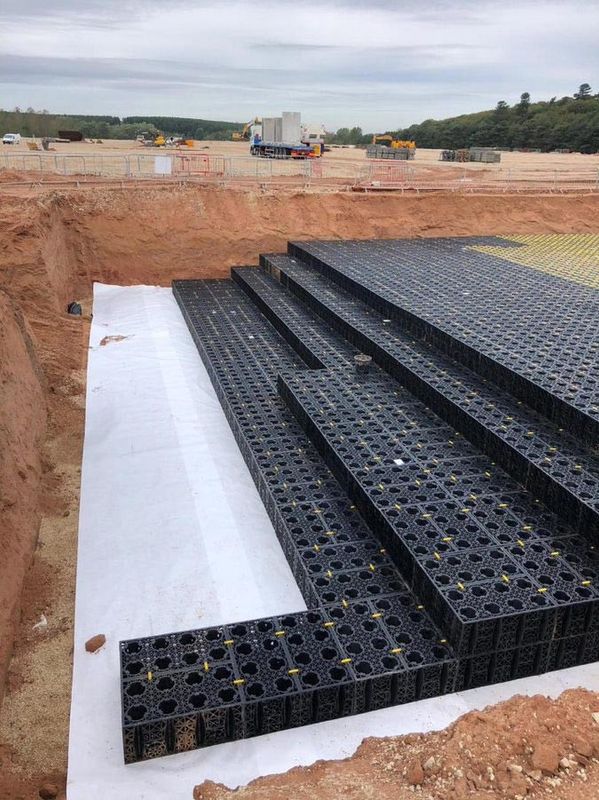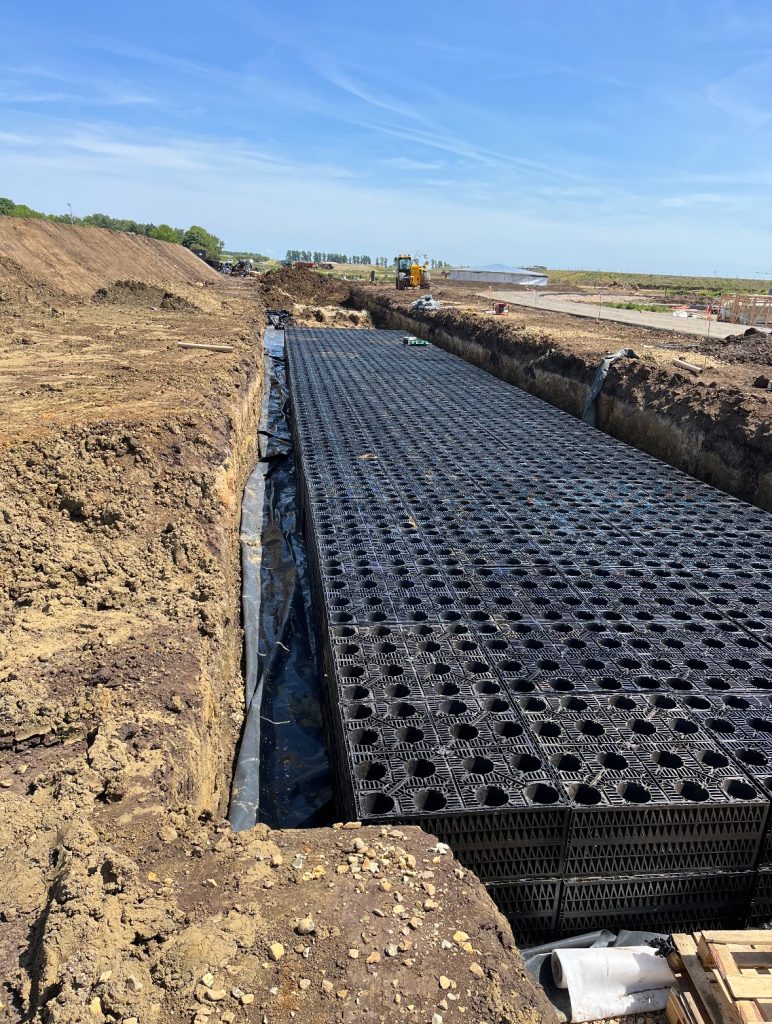
Water management is a critical issue in urban planning and development, particularly in the United Kingdom where unpredictable weather patterns often result in heavy rainfall. One of the key solutions to managing stormwater effectively is the use of attenuation tanks. This blog delves into what attenuation tanks are, their importance, and how they are implemented across the UK.
What are Attenuation Tanks?
Attenuation tanks are underground structures designed to manage excess rainwater and stormwater. They temporarily store water during heavy rainfall and release it slowly into the drainage system, preventing flooding and reducing the risk of water damage. These tanks are crucial in urban areas where natural infiltration is limited due to extensive pavement and buildings.
Importance of Attenuation Tanks.
1. Flood Prevention: By capturing and storing excess rainwater, attenuation tanks help mitigate the risk of flooding, particularly in areas prone to heavy rainfall. 2. Sustainable Urban Drainage: They form a vital component of Sustainable Urban Drainage Systems (SuDS), which aim to replicate natural water cycles and reduce the impact of urbanization on water bodies.
3. Environmental Protection: Attenuation tanks help prevent pollutants from entering natural watercourses by controlling the flow of stormwater and allowing for sedimentation.
4. Regulatory Compliance: In the UK, planning authorities often require new developments to include SuDS, making attenuation tanks essential for regulatory compliance.
How Attenuation Tanks Work
Attenuation tanks are typically made from materials like plastic or concrete and are installed underground. They are connected to the drainage system and operate on a straightforward principle:
1. Collection: Rainwater is collected from rooftops, roads, and other surfaces and directed into the attenuation tank.
2. Storage: The tank temporarily holds the water, preventing it from immediately entering the drainage system.
3. Controlled Release: Water is released slowly from the tank into the drainage system at a controlled rate, ensuring that it doesn’t overwhelm the system and cause flooding.
Implementation in the UK
In the UK, the use of attenuation tanks is becoming increasingly common due to several factors: .1. Climate Change: The UK is experiencing more frequent and intense rainfall events, making effective water management systems like attenuation tanks crucial.
2. Urbanization: With increasing urban development, there is less permeable surface area for natural water infiltration, necessitating engineered solutions for water management.
3. Regulations: UK planning policies and building regulations emphasize the importance of sustainable drainage solutions. The Flood and Water Management Act 2010 and the National Planning Policy Framework (NPPF) both encourage the use of SuDS, including attenuation tanks.
4. Technological Advancements: Modern attenuation tanks are designed for easy installation and maintenance, making them a practical choice for developers and municipalities.
Case Studies
1. London: In densely populated areas like London, attenuation tanks are critical in managing stormwater and preventing flooding. They are often integrated into new developments and retrofitted in existing urban infrastructure.
2. Manchester: The city has implemented several large-scale SuDS projects, including the use of attenuation tanks, to manage its significant rainfall and reduce the risk of surface water flooding.
3. Newcastle: Newcastle’s approach to sustainable drainage includes the widespread use of attenuation tanks to manage runoff from both residential and commercial areas
Future Prospects
The use of attenuation tanks in the UK is expected to grow as climate change continues to affect weather patterns and as urban areas expand. Advances in technology and materials will likely make these systems more efficient and easier to install and maintain. Additionally, increasing awareness of environmental sustainability will drive further adoption of SuDS, including attenuation tanks, to ensure resilient urban infrastructure.
Conclusion
Attenuation tanks are an essential tool in the UK’s approach to stormwater management. By temporarily storing and gradually releasing rainwater, they help prevent flooding, protect the environment, and ensure compliance with regulatory requirements. As the country faces the challenges of climate change and urbanization, the importance of effective water management solutions like attenuation tanks cannot be overstated.


Hi, this is a comment.
To get started with moderating, editing, and deleting comments, please visit the Comments screen in the dashboard.
Commenter avatars come from Gravatar.